In 1898, the U.S. was building an empire. D.C.’s National Portrait Gallery digs in
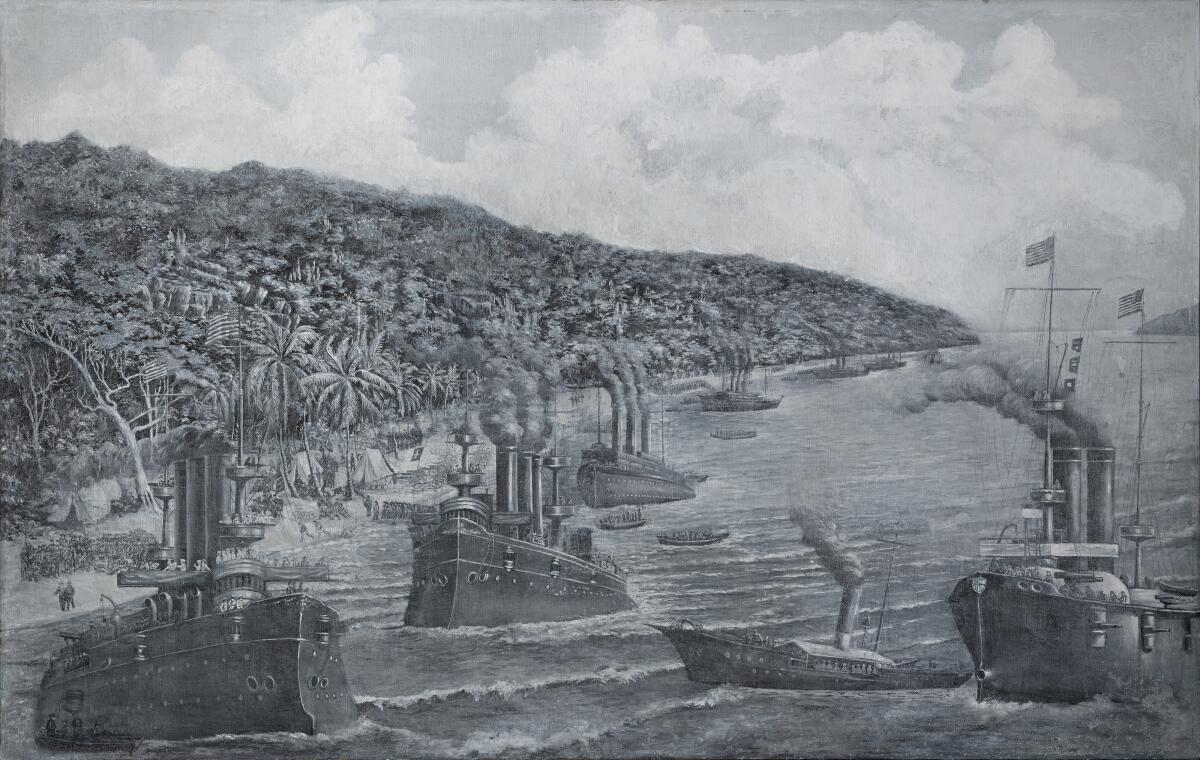
- Share via
Washington, D.C. — Greetings from the nation’s capital, where I’ve been soaking in art shows and watching George Santos eat tapas. I’m Carolina A. Miranda, art and design columnist for the Los Angeles Times, and I’m here with the patatas bravas and all the essential arts news:
The imperial stage
There are years so formative to U.S. history that simply naming them can evoke large-scale historical events: 1619, 1776, 1865. It would be a good idea to add 1898 to that list: That’s the year the U.S. battleship Maine sank in Havana Harbor — likely due to faulty furnaces but, at the time, attributed to aggression from Spain. The incident marked the beginning of the Spanish American War and ultimately led to the U.S. seizing Cuba, Puerto Rico, the Philippines and Guam, Spain’s last remaining colonies. That same year, the U.S. also annexed Hawaii.
In 1890, the U.S. government had declared the frontier closed. Within eight years, the country was turning its imperial ambitions to territories beyond the mainland — resulting in a bloody war in the Philippines and colonial rule that continues to this day in Puerto Rico and Guam.
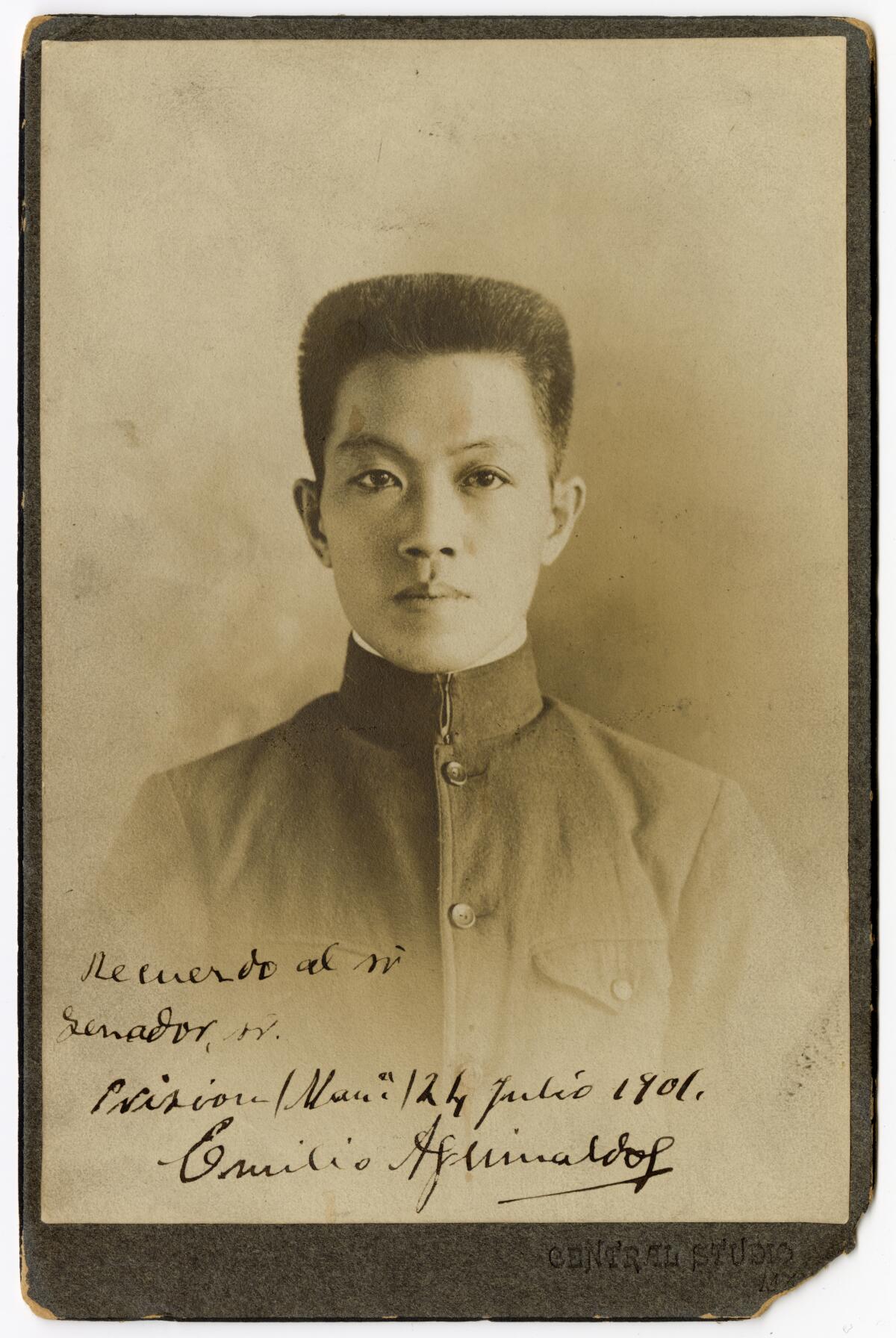
A fascinating exhibition at the National Portrait Gallery in Washington, D.C., explores this history through portraiture and other visual ephemera. Curated by Taína Caragol and Kate Clarke Lemay, “1898: U.S. Imperial Visions and Revisions” brings together 94 objects as a way of not only exploring the U.S.’ expansionist drive but also putting a face to the people who stood in the way of its ambitions.
Namely: the populations of the conquered territories. But also Americans involved in groups such as the Anti-Imperialist League. Among these opponents of empire-building was Mark Twain, represented in the show by an affable early 20th century portrait from John White Alexander. (The dissent wasn’t all high-minded: Some members were concerned about “racial mixing” that could come out of permanent U.S. outposts abroad.)
You’re reading Essential Arts
Our critics and reporters guide you through events and happenings of L.A.
You may occasionally receive promotional content from the Los Angeles Times.
More than half of the exhibition consists of portraits. Naturally, this includes purveyors of U.S. expansionism such as Teddy Roosevelt (painted by John Singer Sargent) and Sen. Henry Cabot Lodge (R-Mass.), a great supporter of the Monroe Doctrine and the war against Spain. And of course, there are the military leaders who made these enterprises possible, such as Army Lt. Gen. Nelson A. Miles, who after decimating Plains tribes during the Indian Wars joined the force that invaded Puerto Rico.
Those names and faces may be familiar from U.S. history texts, but the show is rich with portraits of people from the territories. These include a small photographic studio image of Emilio Aguinaldo, the Filipino independence leader, looking youthful and determined; and a painted portrait of Puerto Rican feminist poet Lola Rodríguez de Tío, a fierce advocate of independence.
Perhaps most remarkable is a large, late 19th century portrait of Queen Lili’uokalani, who struggled to preserve the independence of the Hawaiian people in the face of the much more powerful U.S. Navy. The portrait shows her in the regal pose of a Western monarch — a way of asserting her authority.
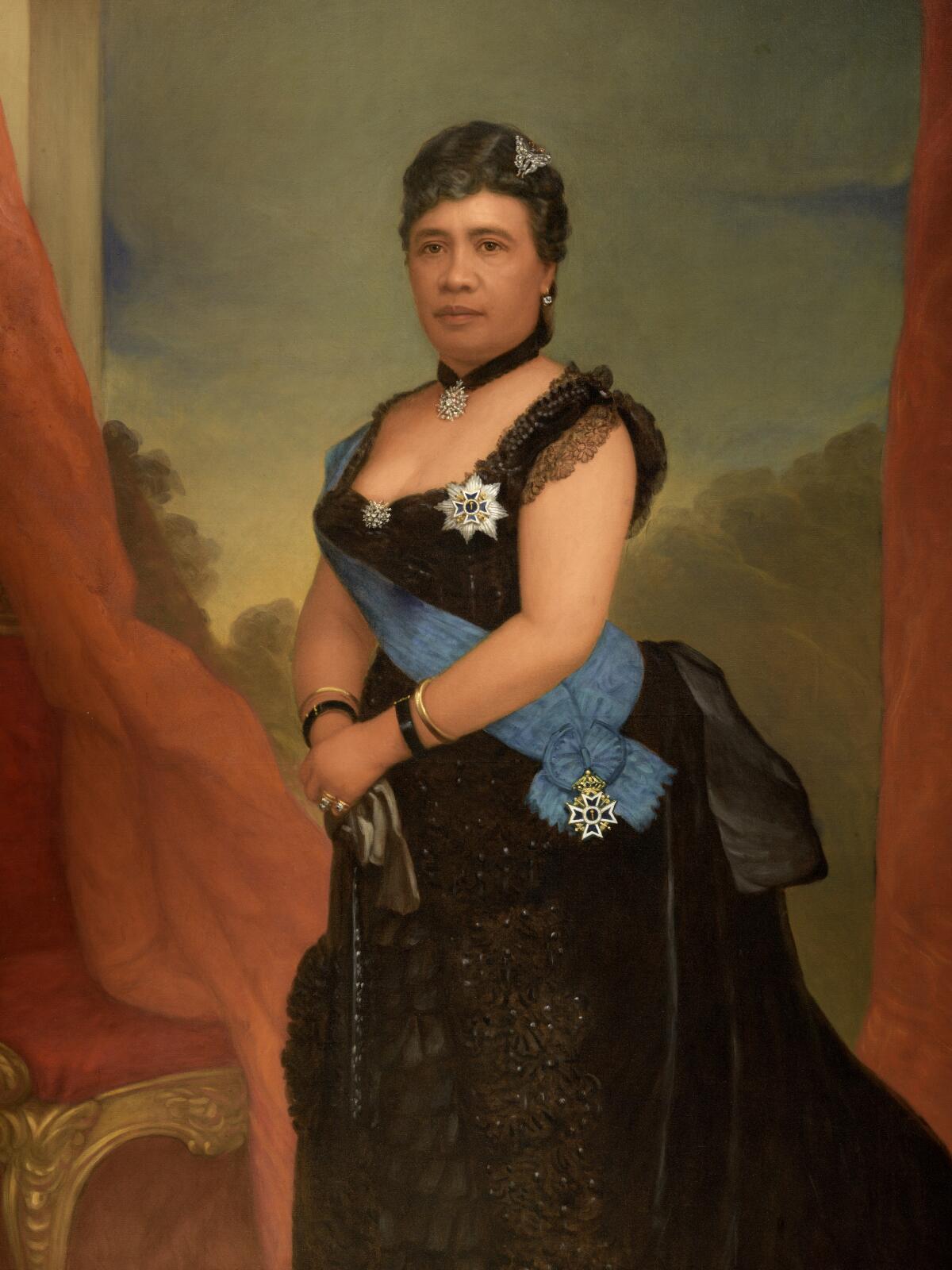
There are other objects in the exhibition: landscape paintings, fliers, photographs and petitions. Among the last, standouts include a missive from the Hawaiian people demanding their liberty and a letter from a group of CHamoru Indigenous people in Guam demanding representation and civilian oversight at a time when the island was ruled by the U.S. Navy. (It makes for powerful reading: “A Military government at best is distasteful and highly repugnant to the fundamental principles of civilized government.”)
I found myself absorbed by some of the weirder ephemera: a handkerchief from 1896 bearing the faces of Cuban independence leaders (including José Martí and Antonio Maceo); a board game inspired by Roosevelt’s Rough Riders. But truly unreal was a patriotic tchotchke: Roosevelt and a crew of military leaders depicted on a hand fan crafted from metallic pieces that were embossed to resemble a pansy flower. As the wall text explained, a pansy in that era could connote “a remarkable or outstanding person.”
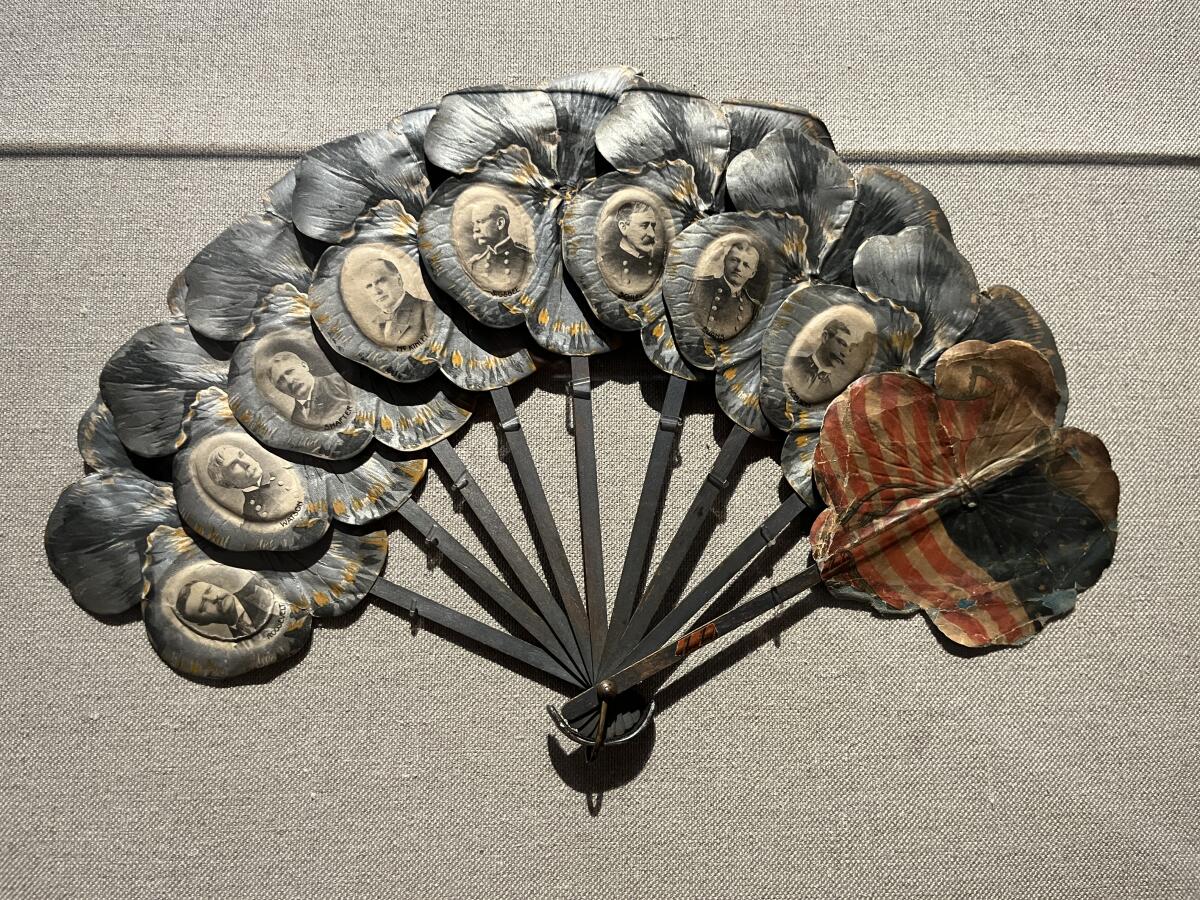
Like everything else in American culture, imperialism has been merchandised.
“1898: U.S. Imperial Visions and Revisions” is on view at the National Portrait Gallery in Washington, D.C., through Feb. 25; npg.si.edu. You can also view the objects in the show, as well as maps and other information, at 1898exhibition.si.edu.
On and off the stage
A new staging of “Inherit the Wind” directed by Michael Michetti opened at the Pasadena Playhouse, featuring contemporary costumes and a multicultural cast. In the roles of the dueling lawyers are Alfred Molina and John Douglas Thompson. The play may be dated in parts, notes Times theater critic Charles McNulty, but the theme — about a teacher arrested for teaching science — remains all-too-evergreen.
Theater critic and director Robert Brustein, known for his appraisals in the pages of the New Republic and for transforming drama programs at Harvard and Yale, died last month at the age of 96. In an appreciation, McNulty describes a complicated figure: “The product of a different cultural climate, his model cannot — and probably should not — be replicated.” But he praises “the depth and breadth of his erudition, the intellectual dexterity, the moral force of his aesthetic devotion.”

The Actors Equity Assn. and the Broadway League have reached a settlement with Barry and Fran Weissler and their company, the National Artists Management Co., over touring productions of “Waitress” that employed union and non-union labor. The Times’ Ashley Lee has details on the deal.
In and out of the galleries
New York-based contributor Jillian Steinhauer wrote a wonderful profile of Maren Hassinger for Image magazine. “Everybody thinks you have to be able to create a figure and put it on canvas or make it out of stone — that’s what an artist does,” Hassinger tells her. “But what an artist does is think about our human condition. That’s the job.” Hassinger, who was born and raised in L.A., recently had her archive acquired by the Getty Research Institute.

For more than a year I’ve been running into painter Tidawhitney Lek’s paintings in group shows and have been dazzled by the ways in which she weaves elements of the Cambodian American experience with flashes of the surreal. Now she not only appears in the Hammer Museum’s “Made in L.A.” biennial, she’s also opening a solo show at the Long Beach Museum of Art’s downtown space. My visit to her Flower District studio was poignant and illuminating.
At the Getty Center, photographer Alfredo Boulton, an important Venezuelan Modernist as well known for his photography as he was for supporting Venezuela’s key artistic institutions, is the subject of an archival show at the Getty Research Institute.
Times art critic Christopher Knight checked out Barbara T. Smith’s “absorbing” retrospective at the ICA LA, organized by guest curator Jenelle Porter and covering a career arc that includes a range of art forms, from sculpture to performance. Incorporating both is a cheeky, feminist parody of a ceremonial rite involving a cast resin sculpture of a squash. “The most fascinating sections,” writes Knight, “survey the first 15 to 20 years as performance emerged.”
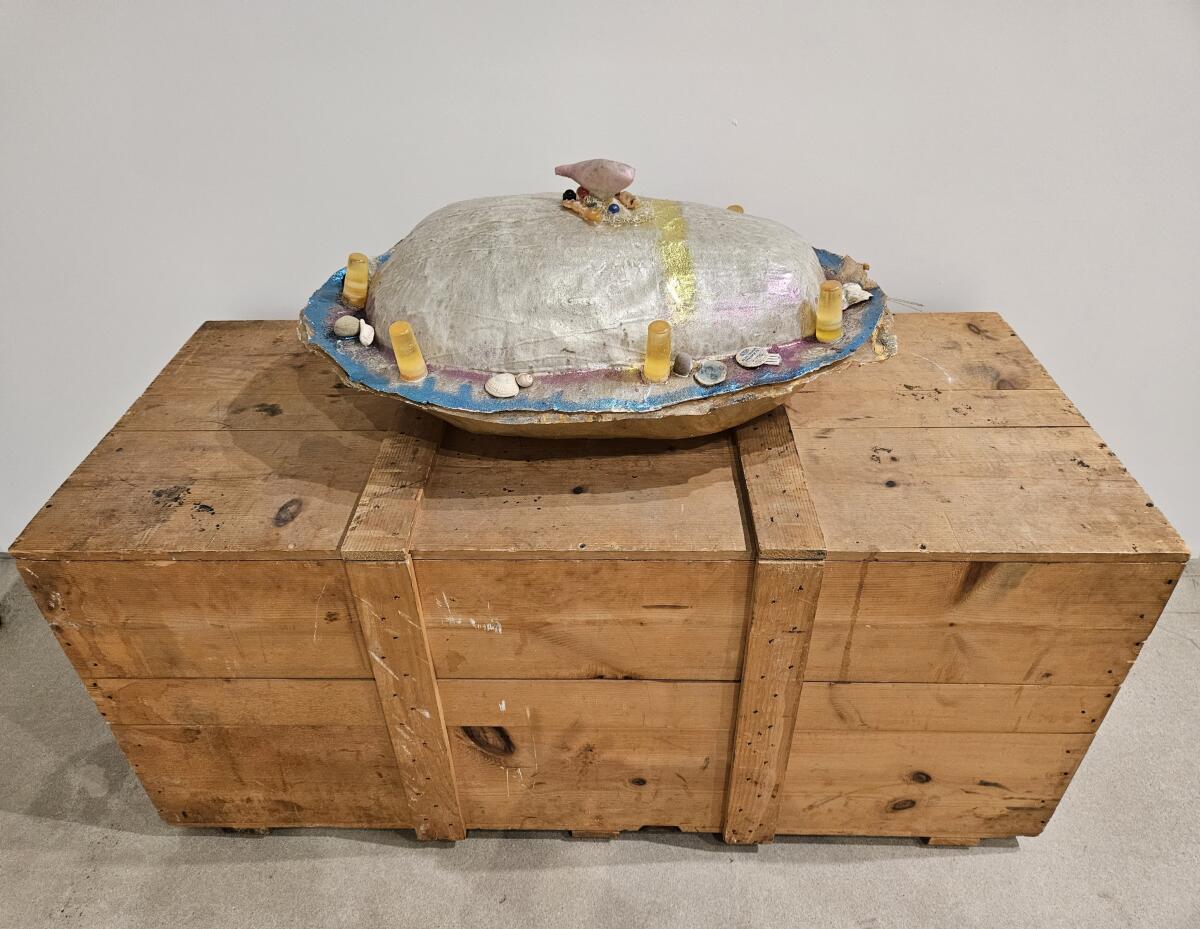
Sadly, the L.A.-based art journal X-TRA announced on Thursday that it was shuttering after 25 years. “We find ourselves facing significant financial and organizational challenges,” reads a statement posted to Instagram. “These difficulties have led the Project X Foundation for Art & Criticism, which supports all of our endeavors, to reach the painful decision to discontinue X-TRA.” The foundation will move forward with material already in production.
In 2018, I wrote about the magazine’s history upon its 20th anniversary.
Musical notes
Yousef Hilmy of Minaret Records has drawn a following from jazz fans around L.A. and beyond, thanks to his DIY shows and the new wave of musicians he is recording and promoting. Takoda, the first musician recorded by the label, says of Hilmy: “I don’t know anyone else who’s not a jazz musician who’s doing this much work for the jazz scene.”
Enjoying this newsletter? Consider subscribing to the Los Angeles Times
Your support helps us deliver the news that matters most. Become a subscriber.
Essential happenings
As always, my colleague Steven Vargas has all the essential happenings around L.A., including Isaac Gómez’s new play and paintings by Simphiwe Ndzube.
Moves
The winners of the 2023 San Diego Art Prize are Anya Gallaccio, Janelle Iglesias, Joe Yorty and Mely Barragán. The four artists will have work on view at the San Diego Central Library through Jan. 13.
Passages
Zdenec Macal, a Czech-born conductor who led numerous international orchestras, including the New Jersey Symphony, has died at 87.
In the news
— Nicholas Galanin and Merritt Johnson asked the federally-funded National Gallery of Art in Washington, D.C., to remove a piece of theirs from view in protest of U.S. support of Israel.
— Climate activists with Just Stop Oil smashed the protective glass of Diego Velázquez’s “The Toilet of Venus” at the National Gallery in London.
— Jo Lawson-Tancred offers a good backgrounder on Pietrangelo Buttafuoco, the former journalist who is set to run the Venice Biennale, and once wrote a laudatory biography of Silvio Berlusconi.
— Four men were charged with stealing a golden toilet created by artist Maurizio Cattelan and installed at Blenheim Palace in England.
— Why a Cruise robotaxi hit and dragged a pedestrian in San Francisco. Dystopian.
— The Las Vegas Sphere reported a $98.4 million loss for the fiscal quarter ending at the end of September and the company’s CFO has resigned.
— The city of Chicago recently granted permits to demolish the exterior and atrium of Helmut Jahn’s Postmodern Thompson Center — but it’s unclear what the design plans are for the building (now owned by Google).
— Laura Marris has a lovely tribute to poet Louise Glück in the Point.
— A new monograph highlights the photographic work of painter Jay DeFeo.
— M.H. Miller has an enjoyable, insightful profile of painter Henry Taylor in T Magazine.
— A terrific interview with illustrator Edel Rodriguez, who created indelible images in response to the Trump presidency and has just released a new graphic memoir titled “Worm.”
And last but not least ...
How am I just learning about Hermès dog collars? The perfect accessory for my 50-pound dog who likes to drool and eat garbage.
The biggest entertainment stories
Get our big stories about Hollywood, film, television, music, arts, culture and more right in your inbox as soon as they publish.
You may occasionally receive promotional content from the Los Angeles Times.




